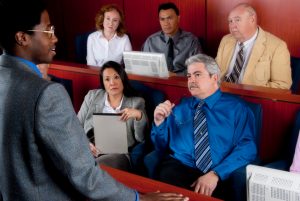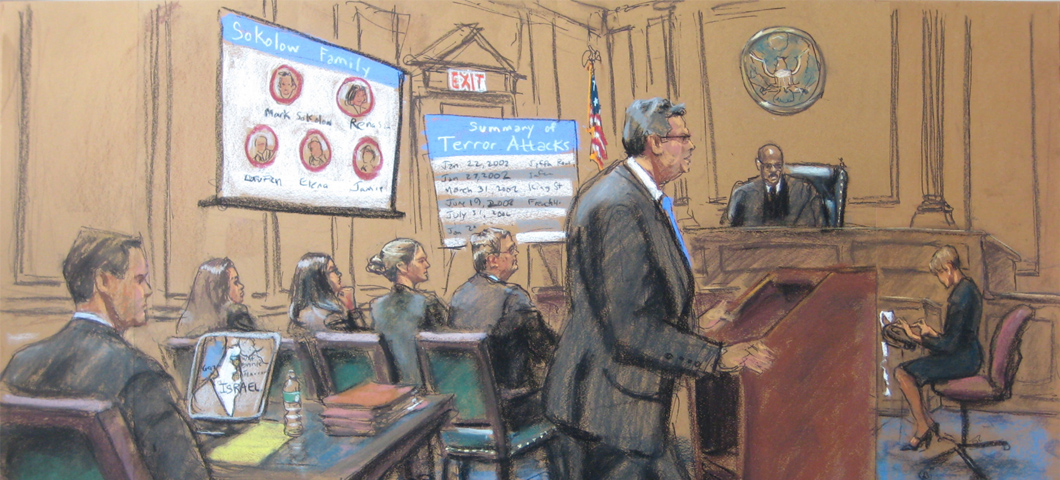Why Your Next Situation Needs a Strong Trial Presentation: Insights and Techniques for Lawyers
Browsing the Intricacies of Trial Presentations: Tips for Seamless Delivery and Engaging Arguments
In the realm of legal procedures, the art of test discussion stands as an essential determinant of success. The complexities fundamental in test presentations require a delicate balance of skill, approach, and skill.

Comprehending Trial Goals
To effectively navigate a test, it is crucial to have a clear understanding of the purposes that require to be accomplished. Before entering the court room, legal teams must define their objectives and desired results. These purposes act as leading concepts throughout the test, shaping strategies and influencing decision-making processes.
Comprehending trial goals involves a comprehensive analysis of the situation, legal criteria, and the customer's ideal passions. Trial Presentations. It calls for a meticulous evaluation of the truths, determining key issues, and expecting prospective obstacles. By establishing certain and measurable goals, lawyers can customize their disagreements and discussions to straighten with the wanted results
Moreover, a clear grasp of test goals enables legal groups to focus on evidence, witnesses, and lawful debates successfully. It permits the development of a coherent story that resonates with the discretionary, enhancing the general case discussion.

Organizing Evidence Effectively
Having a clear understanding of trial purposes lays the foundation for arranging evidence properly in legal process. By lining up the presentation of evidence with the preferred outcomes of the test, legal groups can strengthen their debates and enhance their persuasiveness.
An additional crucial element in organizing proof effectively is developing a rational circulation. Providing evidence in a sequential and coherent manner can help develop an engaging story that supports the lawful debates being made. Furthermore, making use of visual aids such as graphes, timelines, or graphs can better improve the company of proof and assist in clearing up intricate relationships or sequences of occasions.
Furthermore, guaranteeing that all proof offered is admissible and appropriate to the case is vital. Unnecessary or inadmissible evidence can detract from the stamina of the debate and possibly damage the reputation of the here and now party. For that reason, a careful evaluation and option procedure need to be undertaken to include only one of the most impactful and legally sound evidence in the trial presentation.
Crafting Persuasive Narratives
Crafting engaging narratives plays a critical role in offering convincing arguments during lawful procedures. A well-crafted narrative has the power to mesmerize the audience, evoke emotions, and eventually persuade the decision in favor of the here and now celebration. When building a narrative for a useful site trial presentation, it is important to establish a clear storyline that highlights essential points and connects them in a meaningful manner. Begin by describing the facts of the case in an engaging fashion, making certain that the series of occasions is simple to follow. Introduce personalities properly, supplying background info that helps the target market recognize their inspirations and actions. Furthermore, integrating vibrant summaries and interesting language can bring the narrative to life, making it more remarkable for the discretionary. By weaving together proof, statement, and legal debates into a cohesive and influential story, legal specialists can efficiently support for their customers and raise the probability of a beneficial outcome in the court room.
Grasping Aesthetic Help
Effective use aesthetic help is vital to enhancing the influence and clearness of test discussions. Aesthetic help, when utilized tactically, have the power to streamline complex info, enhance crucial factors, and leave a long lasting perception on the discretionary. To understand visual aids in trial presentations, it is critical to ensure that they are clear, concise, and relevant to the disagreements being made.
When integrating aesthetic help, such as graphes, photos, timelines, or graphs, into a trial presentation, it is important to keep them aesthetically appealing yet expert. The visuals must enhance the spoken disagreements, supplying an aesthetic depiction of the info being gone over without overwhelming the audience with unnecessary details.
In addition, exercising with the visual aids ahead of time is vital to ensure a smooth distribution during the test. Familiarizing oneself with the content, changes, and timings of each visual help can help keep the circulation of the presentation and prevent technological glitches that may develop.
Providing Impactful Closing Arguments
An engaging closing disagreement offers as the culmination of a trial presentation, enveloping the core narrative and convincing the discretionary in the direction of a desirable choice. To deliver an impactful closing debate, it is essential to succinctly wrap up vital factors, highlight the toughness of your situation, and attend to any weak points in a calculated manner. Begin by laying out the primary arguments that straight from the source sustain your client's setting, stressing why the evidence provided throughout the test sustains your narrative. It is important to produce a sense of communication and clarity, assisting the judge and court towards the wanted verdict.
Additionally, incorporating emotional appeal can better strengthen your closing argument. Eventually, a well-crafted closing disagreement need to leave a long-term impact, engaging the court and jury to rule in your customer's favor.
Conclusion
Finally, grasping trial presentations includes comprehending his explanation objectives, organizing evidence, crafting narratives, making use of aesthetic help, and supplying impactful closing disagreements. By carrying out these methods successfully, legal representatives can provide their situation perfectly and make compelling arguments in the court room. It is critical to browse the intricacies of trial presentations with accuracy and ability to accomplish success in legal process.
By straightening the presentation of evidence with the desired end results of the trial, legal groups can enhance their arguments and boost their persuasiveness (Trial Presentations). To understand visual aids in test presentations, it is essential to ensure that they are clear, succinct, and appropriate to the arguments being made
An engaging closing disagreement serves as the end result of a trial discussion, encapsulating the core narrative and encouraging the judge and court towards a positive choice. Begin by laying out the major arguments that sustain your client's setting, highlighting why the proof provided throughout the test supports your story.In conclusion, understanding trial discussions involves recognizing goals, arranging evidence, crafting stories, utilizing aesthetic aids, and providing impactful closing arguments.